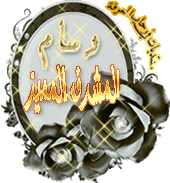الحبيب غريسي
عضو مـلــكــي


الجنس : 
المساهمات : 10498
العمر : 42
العمل/الترفيه : معلم
المزاج : كن جميلا ترى الوجود جميلا
تاريخ التسجيل : 18/09/2009

 |  موضوع: museums in the uae =المتاحف في الإمارات موضوع: museums in the uae =المتاحف في الإمارات  الخميس أغسطس 05 2010, 20:17 الخميس أغسطس 05 2010, 20:17 | |
|
Sheikh Saeed Al Maktoum House
Sheikh Saeed Al maktoum House This imposing building distinguished by its four elegant wind-towers, stands along the famous Creek of Bur Dubai. It was built in 1896 and was the residence of the Ruler. It takes its name from Shaikh Saeed Al Maktoum, who resided there until his death in 1958.
Originally strategically situated at the mouth of Dubai’s lifeline, the Creek, this carefully restored museum now lies close to the Bur Dubai side of the Shindagha Tunnel and next to the Heritage and Diving Village.
Shaikh Saeed House is built in the traditional manner of the Gulf Coast, from coral covered in lime and plaster. The house has a large courtyard in the style of residences of the olden days. It is partly single, and partly two-storied, comprising a large number of rooms, verandas and bath rooms, divided into independent family units.
There are two entrances to the building. The main entrance is from the Creek side, through a security yard, from where is the entrance to the main majlis and guest rooms. The yard leads also to the main courtyard, around which are distributed five separate family units, each of which consists of a veranda, majlis and rooms. The second entrance is on the rear side of the building, and was probably reserved for family members.
Dubai Municipality appointed a specialized Consultant to carry out a thorough survey of the building and its deterioration, and then plan its restoration. The work was commenced in 1984, and completed two years later using traditional building materials and techniques, and where necessary, strengthening the structure with modern materials.
Infinite care was taken in the restoration of the architectural elements of the building. The restoration is remarkable for its carved teak wood doors and windows, architraves and wooden lattice screens, and the balustrades of railings. The pierced gypsum ventilating screens have floral and geometric designs, and are set into the thick walls.
The House is now converted into a Museum of Historical Photographs and Documents of the Emirate of Dubai and illuminated at night with flood-lights; it stands as a reminder of Dubai’s rich architectural heritage and culture.
On August 7th 1998, a sand sculpting competition was held at Dubai’s Mamzar Park under the patronage of Dubai Municipality and the Dubai Summer Surprises Committee. Participants flew in from all over the world. The photograph (left) shows the sand sculpture of the old palace of Sheikh Saeed Al Maktoum.
This sculpture was created by The Sandemons, of Canada. It measured 22 ft x 22 ft and was over 7 ft high.
Majlis Al Ghoraifa
Built around 1955, the Al Ghuraifa Majlis was a summer retreat for the late Shaikh Rashid bin Saeed Al Maktoum, the Ruler of Dubai, where he spent his afternoons when the temperatures became moderate and the humidity was high. The Majlis is situated in the Umm Suqaim area which was once dotted with date palm groves, and fishermen’s’ huts.
The Majlis, about 100 square meters in area, is on a large site of 3,300 sqm in the centre of a residential area. In the past, it was the only building constructed of stones and gypsum in the midst of a date farm.
Its ground floor has a large covered area divided by a row of pillars. Along the north of it is a large storeroom. The first floor is reached by an open staircase where one enters a long veranda. Behind this is the summer majlis. A wooden ladder leads to the roof from the veranda. The entire structure is simple with shuttered wooden windows on the first floor, set into deep pillars overlooking the garden. The windows are in two sections, whereby the top and lower halves can be opened separately. The niches above the windows have perforations for ventilation.
Dubai Municipality has planned the open land as a traditional park to serve the neighboring residences. The landscaping includes a boundary wall with gypsum decorative panels. The layout includes a paved pathway, rows of date palms with a network of ‘falaj’, traditional water channels, a pool and a covered area of palm thatch with a wind-tower of rustic design, which has a cafe below. There is a guard room and toilets at the entrance gate. Dubai Municipality is executing the entire project through its own work force.
Heritage and Diving Village
Situated in the Shindagha area near the creek mouth (see map) the Heritage Village has been created where potters and weavers display their art. The village provides a glimpse of Dubai’s traditional culture and lifestyle.
Focussing on the Emirate’s maritime past, pearl diving traditions and architecture, the centre offers storybook displays including a tented bedouin village, ancient armoury, wooden chests and cooking utensils.
The village is close to the site of Sheikh Saeed Al Maktoum’s House.
Pearl diving, one of the oldest professions in the region, existed almost six to seven thousand years back. A pearl diving ship carried 10-60 people on board for an expedition. The team comprised a captain (Nokhaza), some divers, seeb, and other staff. The diver often risked his life to gather pearl studded oysters from the sea bed. He used to dive deep for more than two minutes to collect a handful of oysters. The season lasted only for six months starting from April because the Gulf waters during this season were warm and safe. The Emirate of Dubai was most active in this adventurous occupation and owned about 335 pearl fishing dhows at a time.
The Diving Village forms part of an ambitious plan to turn the entire Shindagha area into a cultural microcosm, recreating life in Dubai as it was in the days gone by.
Museums
Dubai National Museum was established and officially inaugurated on May 12th 1971.
The Museum is located in Al Fahidi Fort which is one of the most ancient historical Buildings in Dubai (built: 1787). It is thought to be Dubai’s oldest building. It was built as a fort for sea defense, and the importance of the Fort increased with the expansions which were built during the era of the Late Sheikh Maktoum Bin Buti 1833-l852 which added most of the architectural features which are still existing upto now.
To protect this ancient monument, it was rehabilitated during the era of Shaikh Maktoum Bin Rashid Al Maktoum, vice president, prime Minister of UAE and Ruler of Dubai.
The Museum contains a collection of artifacts which depict the different aspects of Social, economic and Professional life which prevailed during the past century and the start of the present century. It also contains many.” archaeological objects such as pottery, stone and metallic items, stone engravings, and skeletons, which were discovered during the archaeological explorations executed in the different areas of the Emirate of Dubai (Hatta, Al Soffoh, Al Qusais, and Al Jumeira). They date back to the third, second, and first millennium BC as well as the Islamic era (Seventh - 13th Century). Displays include everyday artifacts and archaeological finds from the area, some dating back 4000 years. Pearl merchants, fishermen, housewives and wedding finery are all presented.
In the past the fort was used to defend the town from warlike neighbouring tribes. It has also served, at various times throughout history as the seat of government, the ruler’s residence, a store for ammunition, and a jail.
The walls of the fort are built from coral and shell rubble from the sea, and are cemented together with lime. Wooden poles called handel support the upper floor, and the ceiling is made of palm fronds, mud and plaster. A massive, iron-studded door stands at the entrance, and its battle-scarred walls and towers bear witness to the conflicts of the past.
When the Museum was opened by the ruler of Dubai in 1971, its main aim was to furnish a record of the Emirate’s traditional life, much of which is fast disappearing. Local antiquities have been collected and stored, along with artefacts from many African and Asian countries, trading partners with the Emirate, throughout its long commercial history.
At the Museum’s entrance, the visitor can browse through a collection of old maps of the Gulf and the Emirates, together with aerial photographs showing Dubai’s considerable urban expansion between 1960 and 1980.
Inside, a treasure trove awaits. A large section is devoted to musical instruments, with displays of drums, flutes, lyres, bagpipes made of goatskin and other locally-made instruments used in performances on festive occasions.
On a less peaceful note, displays of deadly weaponry are enough to curdle the blood. The curved daggers known as hanjars are much in evidence, and the display also includes swords, spears, bows and arrows, shields made of sharkskin, pistols and axes.
windtower A model of a wind-tower room is an interesting feature of the architecture section, with diagrams and photographs showing different types of wind-towers from the older areas of Dubai city.
The wind-towers are essential features of Gulf architecture which ameliorate the discomforts of the hot summer months. These square masonry towers, or ‘barjeels’ are open on all sides and rise above the roof tops. They catch the breeze and funnel it into a room below where the increased air movement provides comfort to the occupants. The air vents of the wind-tower are open in summer and closed during the winter season. The builders of days gone by have shown ingenuity in the various designs of the wind-towers and their decoration.
This museum is well worth a visit.
Narish Khyma, situated close to the Museum, is a typical Arab summer-house, with an interesting collection of local boats. These include a replica of the famous abra — the ferry boats used for transporting passengers across Dubai’s river creek.
|
|
گاۑـزن ĸαγ. °
عضو مـلــكــي


الجنس : 
المساهمات : 15602
العمر : 27
المزاج : ربي اكمل لي ما تبقى من حملي واجلعه باحسن حال
تاريخ التسجيل : 12/04/2009

 |  موضوع: رد: museums in the uae =المتاحف في الإمارات موضوع: رد: museums in the uae =المتاحف في الإمارات  الخميس أغسطس 05 2010, 22:17 الخميس أغسطس 05 2010, 22:17 | |
| يووووووووه يووووووووه يووووووووه ههه
يسلموووووووووو
بااارك الله فيك |
|
الحبيب غريسي
عضو مـلــكــي


الجنس : 
المساهمات : 10498
العمر : 42
العمل/الترفيه : معلم
المزاج : كن جميلا ترى الوجود جميلا
تاريخ التسجيل : 18/09/2009

 |  موضوع: رد: museums in the uae =المتاحف في الإمارات موضوع: رد: museums in the uae =المتاحف في الإمارات  الخميس أغسطس 05 2010, 23:45 الخميس أغسطس 05 2010, 23:45 | |
| و فيك بارك الله مريوم المميزة |
|



